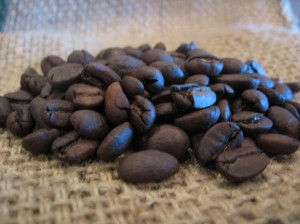
The best coffee beans are artisan roasted at http://www.troubadourcoffee.com
There are many factors that influence the flavor of coffee beans. Ultimately the nuances we coffee geeks (aka coffee professionals) look for start with the soil the trees are grown in. There are other factors that come into play such as climate, soil, rain, sun, harvesting, processing, storage and roasting that all play a role in why coffee tastes the way it does. And we are not talking about flavors like vanilla-hazelnut or chocolate cream pie surprise; those types of ‘flavors’ are additives added after roasting (actually the beans are soaked in a flavor concentrate and absorb the flavor…ewww!) Nothing natural about that! However in this discussion, we will focus on the coffee origin that starts with climate and region. After all, that is where it all starts.
There are several countries that produce Arabica coffee beans. Obviously they cannot be grown in every country or they would be. Coffee beans need to have the right climate and altitude in order to survive. Each country must be located in a geographical zone capable of sustaining a coffee tree. The optimal climate has to fall into one of two categories: subtropical or equatorial.
The subtropical region boasts an altitude of 1800-3600 ft. This would include parts of Brazil like the Sao Paulo state as well as Zimbabwe in Africa and Mexico. The climate conditions allow for one growing season and one maturation season because of the equal rainy and dry seasons.
The equatorial regions with an altitude of 3600-6300 ft would be those found in say Ethiopia, Kenya and Colombia. These regions haven’t any dry season so all drying of processed coffee beans has to be done by mechanical means not by mother nature. She is not so dependable when you need 4 wks to dry coffee outside on a patio and the rain is not letting up. The upside is that frequent rainfall allows for two harvesting seasons.
When you actually break down the origin by continent, you would have a list as follows:
North America and the Caribbean – Hawaii is known mainly for Kona coffee which gets its much sought after characteristics from the rich volcanic soil. The Mexican states of Veracruz, Oaxaca and Chiapas boast a cup of coffee with a wonderful aroma and a depth of flavor, often with a pronounced sharpness. Puerto Rican coffee is known for its balanced body, acidity and fruity aroma.
Central America – Guatemalan coffee beans are medium-to-full bodied coffees that usually have a depth and complexity of taste that is almost spicy, nutty or chocolaty. Costa Rica is known for coffee that is a perfect balance and full bodied. Panama coffees are anywhere from intensely acidy to delicately and brightly floral.
South America – Colombian coffees are generally mild, with a well-balanced acidity and overall sweetness while Brazil, still sweet to taste tends to offer a more low-acid, medium bodied coffee.
Africa and the Middle East – Ethiopia has three main growing regions for coffee beans which are Sidamo, Harer and Kaffa. When tasted, Ethiopian coffee tends to be full flavored, a tad ‘earthy’, taste of berries, winey in character and full bodied. Kenya coffee is sharp with a fruity acidity. Kenyan also offers a full body and rich fragrance.
Arabia – Yemen is a deep and rich flavored coffee. Fun fact – Mocha Java was an accidental blend of Arabian coffee and beans from the island of Java.
Asia – Indonesia is known for the islands of Sumatra, Java and Sulawesi (Celebes) that produce a rich, full body and mildly acidic coffee. Vietnam produces mainly Robusta coffee. Vietnamese coffee has a light acidity and mild body with a good balance. It is usually used for blending, especially in espresso blends.
When we roasters blend coffee beans to come up with something original, we usually start with a flavor profile that we want to accomplish and work backwards. That is why having a working knowledge of all types of coffees is a good prerequisite for blending. Of course you will have your ‘purists’ that say if a Guatemalan Estate coffee cups at a score of 90, why not let it stand on its own? They don’t agree with blending and say it’s a way to cover up defects in the cup. Well true it does that, however I do not believe that anyone would intentionally do that. This profession has so much passion that I believe anyone in it is in it 100%. By that, I feel that we are all striving for our absolute best so we go out of our way to ensure the product meets or exceeds every expectation. I believe that blending gives a certain creativity to a roaster that would only be available in a particular roasting profile.
Having said that I happen to favor the single origin coffees more than the blends. It’s a quest each season to get as many bags of the best estate and single farm green coffee beans that we can. It is as much a goal to have a unique and sought after single origin as it is to have a unique and sought after original (and secret!) blend.
So, the next time you buy a bag of whole bean coffee or take a sip of the black brew, try to pick out the obvious flavor characteristics we talked about here. You’ll be surprised at how much coffee geek stuff you may just know now!
I roast and sell coffee, plain and simple. If you like the best coffee at great prices come and get your coffee beans!

You must be logged in to post a comment.